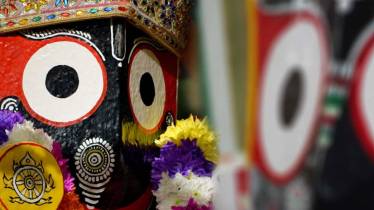As the name suggests, the Jagannath Temple is dedicated to Lord Jagannath, a form of Vishnu – one of the trinities of supreme divinity in Hinduism. As per the mythology, King Indradyumna of Avanti built the main temple of Jagannath in Odisha’s Puri.
The temple is one of the 108 Abhimana Kshethram of Vaishnavate tradition. The Puri temple is famous for its annual Ratha Yatra. The three principal deities are pulled on huge and elaborately decorated temple carts and the Bhil Sawar tribal priests perform Yagnas in the Jagannath temple.
About Mahaprasad
Jagannath Temple has a huge and unique kitchen (Madapalli) and the priests prepare Mahaprasad to feed almost 30,000 devotees every day. The kitchen has been set up in a total area of 15,000 sq ft.
The steam-cooked food is offered to Lord Jagannath first and then to Bimalaa Debi after which it becomes Mahaprasad.
What’s allowed and what’s not?
Foreign food items like potatoes and tomatoes are not allowed to prepare Mahaprasad. That’s not all, beetroots, corn, green peas, cauliflowers, cabbage, carrot, coriander, beans, turnips, bell peppers, chili peppers, green beans, karelas, lady fingers, and cucumbers are also never used while preparing Mahaprasad.
In the temple, masala and spices such as cardamon and cloves are added only after offering, after the Mahaprasad is brought to Ananda Bazaar.
